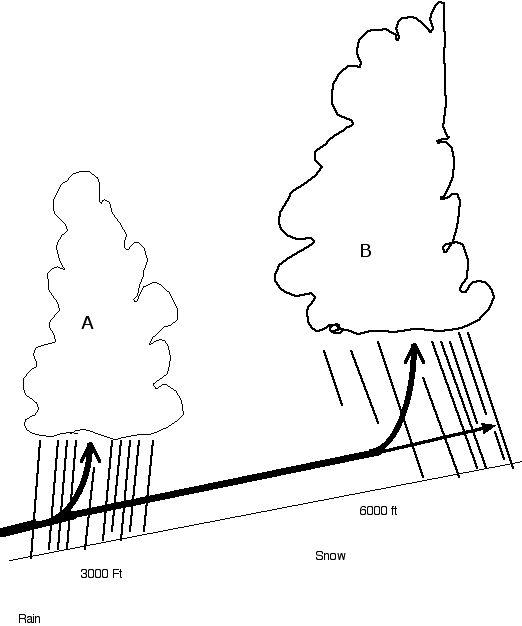 |
AquariusRadar |
Hydrology Concept |
|
|
|
| Home |
Water Management Tool |
Controlled Water Transport |
Frequent
Questions |
This page illustrates how the microwave heating of CN clouds works to transport water. In the first sketch, a rain cell A continues to rain heavily in the already saturated low river valleys while snow squall B uses up remaining moisture of the atmospheric stream for the snowfall above at the higher elevation. Mountains of the West are typically high enough to create a rain shadow (not shown here) on the lee side of the mountain. |
|
Snowpack
Enhancement |

Normal without microwave heating. |
The Butterfly Effect: Edward Lorenz, pioneer weather scientist, predicted this capability over 50 years ago. |
Stormwater
Abatement |
When radar (microwave) energy is directed at CN A as shown below, the tiny but repetitive pulses of microwave energy slows the growth of CN A. CN B, by nature always competing for moisture, now has more moisture available in the atmospheric stream and continues to grow and produce heavier snowfall than would normally fall. The low level rain is reduced and higher altitude snow fall is increased. Avalanche is preferable to flood. Water has been transported to storage. |
|
Cloud
Seeding
Augmentation
Rain Shadow
Current Study |

With microwave heating targeted upon cloud A. |
Southern
California
Operations |
|
Radar Rain Shadow available from this page>
Radar Rain Shadow |
Ideal Candidate
Radar |
The microwave energy is focused on the cloud base where a tiny change in water molecule temperature has dramatic effect on condensation rates. Attempting to heat the upper portions of the cloud(-35 degrees F) would be useless.
AquariusRadar is a "rob Peter to pay Paul" type system and operates as a cost effective pure water transport system only as long as there are abundant rainfall in the control area and a lofting mechanism in the "down wind" target environment; competing thunderstorms, mountains-elevation lifting, air mass instabilities-cyclones, or cold/warm fronts. |
Gulf of Mexico
Operations |
Had Aquariusradar been available and operating on storm clouds in the valley above the dam and moving more moisture to the snowfield nearer the Sierra crest, the cost and near disaster at the Orville dam in Feb. 2017 could have been averted. |
|


